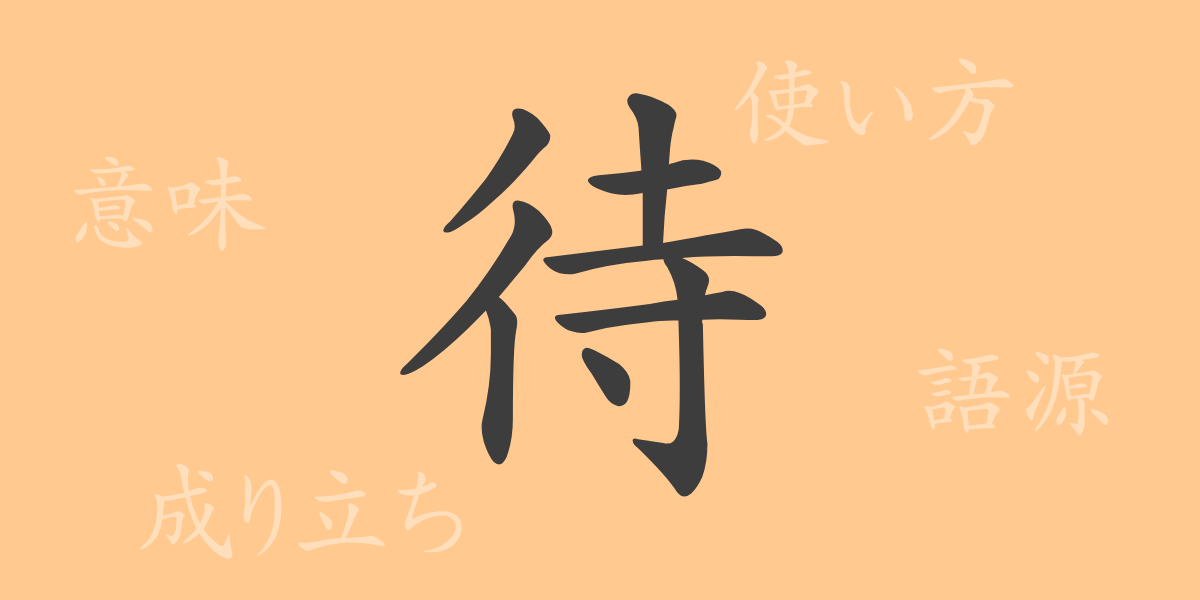Kanji, deeply ingrained in Japanese culture, reflect the profound history and beauty of their forms and meanings. One such commonly used Kanji, ‘待’ (タイ) (tai), permeates our everyday lives. This article explores the Kanji ‘待,’ from its origins to its meanings and uses, delving into its rich tapestry through readings and phrases.
Origin of ‘待’ (tai)
The Kanji ‘待’ originated in ancient China, symbolizing a person waiting by the side of the road. Initially derived from a pictograph of a person standing beside a path, it has evolved over time to its present form. The character ‘待’ encompasses not just the action of waiting but also complex concepts related to time and interpersonal relationships, such as expectation and treatment.
Meaning and Usage of ‘待’ (tai)
‘待’ primarily means ‘to wait,’ ‘to expect,’ or ‘to await.’ It is used alone or as part of compound words like ‘待機’ (waiting), ‘待望’ (long-awaited), and ‘期待’ (expectation). Contextually, it can also derive meanings such as in ‘待遇’ (treatment), shifting from its original sense of waiting.
Readings, Stroke Count, and Radical of ‘待’ (tai)
Let’s explore the readings and structure of the Kanji ‘待’:
- Readings: On’yomi ‘タイ’, Kun’yomi ‘まつ’ (matsu).
- Stroke Count: ‘待’ comprises 9 strokes.
- Radical: The radical of ‘待’ is ‘彳’ (ぎょうにんべん) (gyouninben).
Phrases and Idioms Using ‘待’ (tai) and Their Meanings
There are numerous idioms and phrases that include ‘待’, each carrying unique meanings:
- ‘待望’ (たいぼう) (taibou) – Something long-awaited comes to fruition.
- ‘期待薄’ (きたいはく) (kitaihaku) – Little hope that expected outcomes will occur.
- ‘待ち遠しい’ (まちどおしい) (machidooshii) – Feeling eager anticipation for something.
- ‘待てば海路の日和あり’ (まてばかいろのひよりあり) (mateba kairo no hiyori ari) – A proverb meaning good times come to those who wait.
Conclusion on ‘待’ (tai)
The Kanji ‘待’ illustrates how we interact with time and the expectations within human relationships. More than just marking the passage of time, this character embodies profound cultural and historical significance, enriching the Japanese language. When using ‘待’ in daily communication, consider reflecting on the cultural and historical context that underlies it.

























